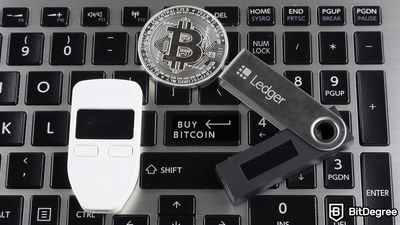Stop overpaying - start transferring money with Ogvio. Join the waitlist & grab early Rewards NOW! 🎁
The metaverse is one of the most exciting developments to come out of the blockchain and cryptocurrency industry. It's a futuristic concept currently being built and constructed right in front of our eyes. However, it is currently in a state of limbo where people hear about the metaverse regularly, but rarely learn about how to use metaverse tools and technologies.
Many people are curious about the interplay that this tech has with other fields, such as metaverse in healthcare, metaverse in banking, metaverse for education, and other niche metaverse use cases. These are topics that arise in the news and across social media, but oftentimes they are not fully explored or unpacked. However, I aim to do this within my discussion here.
With big names in the industry, such as Unstoppable Domains, paying attention to the metaverse, along with a range of scientists and futurists, it's definitely worth delving into the topic and learning how to use metaverse tools. This piece is less of a guide, and more of a primer for this new digital and social space, designed to give you the information you need to get involved yourself!

Did you know?
Subscribe - We publish new crypto explainer videos every week!
Best Types of Blockchains Revealed (5 Animated Rules)
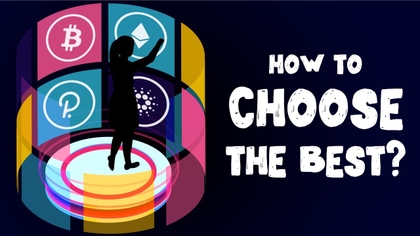

Table of Contents
What is the Metaverse?
The metaverse is a digital space where people can congregate and connect with one another; it's a virtual environment where people from around the world can interact together. As you may be able to tell, this is not a tremendously unique idea – it has been discussed in science fiction for decades, and spaces like this have existed in games for several years. So, what is it about the metaverse in this current day that makes it distinct?
The biggest difference is that there has been a tremendous amount of technological advancement which has occurred in a relatively quick period of time. Virtual reality headsets have gotten more impressive, and blockchain technology has reached a level of maturity to the extent that there can now be genuine spaces in existence that run largely on decentralized networks.
The desire for these spaces to be decentralized could be considered a retaliation and reaction to the way people have seen the current tech landscape become overdeveloped in our physical world. Tech giants have a hand in a huge amount of our online and digital activity, and naturally, people want something they can have a shared stake in, rather than another concept that is controlled by a small handful of people and corporations.
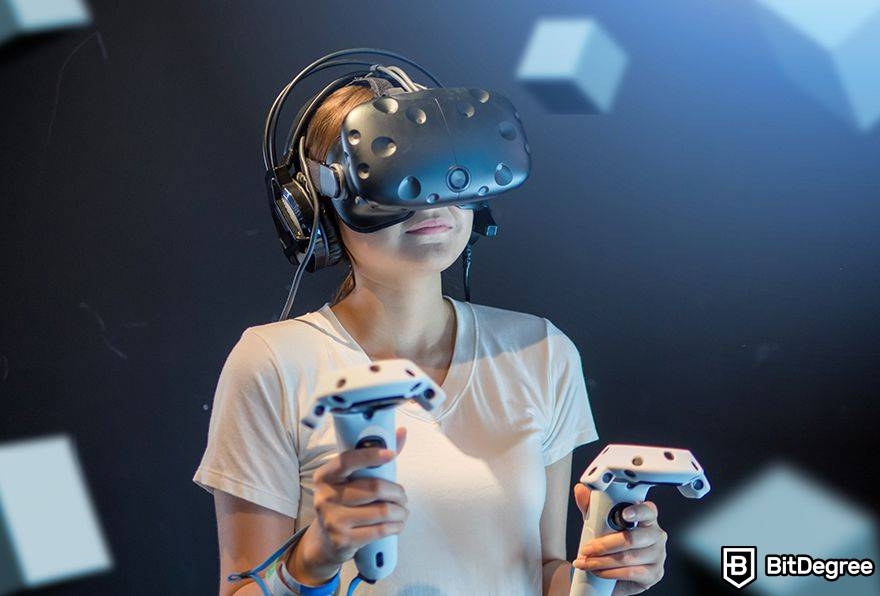
This is why it's no coincidence that the metaverse gained prominence when the blockchain space started to get more widespread and mature. While the idea of a shared digital space doesn't need to be blockchain-based, there is a real appetite for this type of online world to exist. The desire is a response to people's disdain for how the tech world is currently being run.
For the purposes of my discussion, I will be focusing on these decentralized blockchain-based metaverses, rather than the various centralized ones that are also being developed in tandem. It's worth noting that one of the reasons why people's desire for the metaverse has increased lately is because of the COVID pandemic, where many people were isolated behind screens.
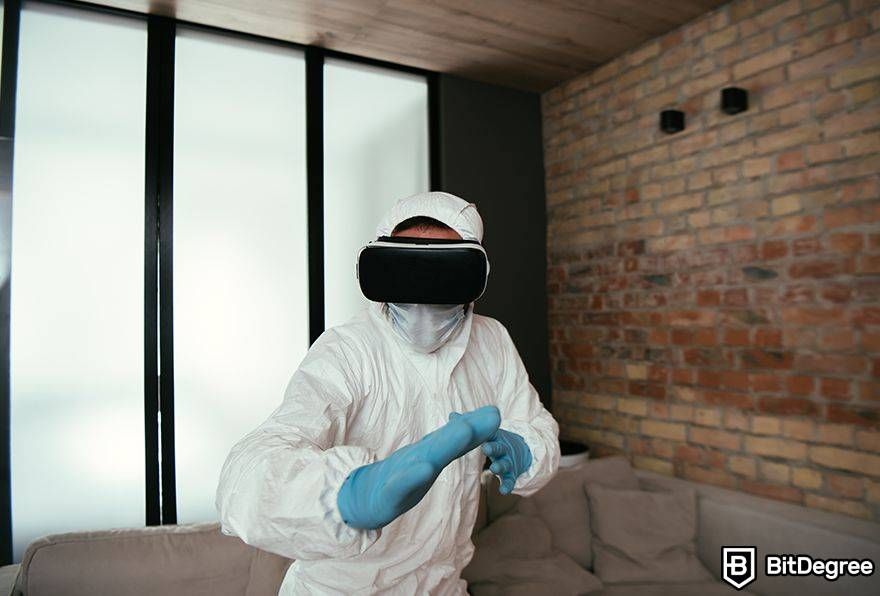
If a situation like the pandemic were ever to return, or if COVID were to spike again or become vaccine resistant one day (as is possible with any virus), then it would be deeply important to people's social and mental health that the metaverse is up and running, and accessible to all. Of course, this also means that people need to know how to use the metaverse, and how they can get the most out of it.
How to Use Metaverse Technology
After people understand what the metaverse is, the next question they often have is how to use metaverse tech. There are two answers to this – both relate to accessibility and wealth. The primary way that the metaverse is advertised to people is via VR headsets. These are essentially helmets or thick goggles that someone wears so that all they can see is a digital landscape.
The idea is that these are more immersive, and that if you spend enough time wearing one, then the virtual environment you are facing begins to feel more real. It helps with interactivity and the suspension of disbelief. VR headsets have existed for decades, but they have experienced a huge jump in quality over several years. Along with this, they have become a little cheaper, making them possible to purchased.
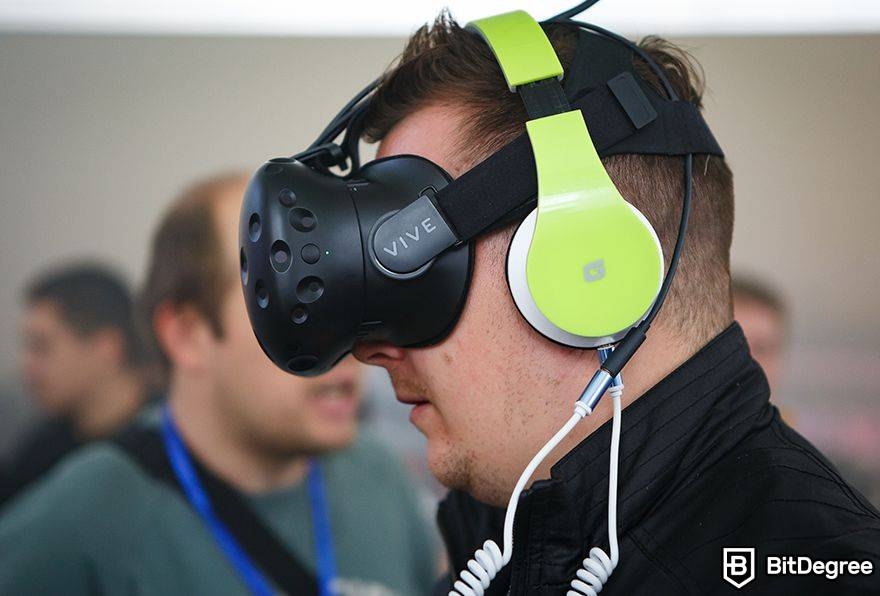
That being said, they are still pricey, and so it's rare to run into a person from a working-class home who has one. Thankfully, they are not the only method of accessing these spaces. Another answer to the question of how to use metaverse tech is that you can use a computer, tablet, or phone. This is where the metaverse in question will be visible on a screen in front of you. Naturally, this will be less immersive, but beyond that, it should not limit your experience too significantly.
The difference between a headset and a screen is mostly to do with how enveloping and mesmerizing the experience is. Beyond that, it does not affect your interactions or limit who you can spend virtual time with. The process of accessing the metaverse is also relatively similar regardless of the hardware you use.
Regardless, you will still need an account and an avatar of some sort. For decentralized, blockchain-based spaces, it may be possible to sign up with a crypto wallet, meaning you might not even need an email address to do so. In the same sense that wallets work as your gateway to a range of Web3 tools, they can also work as one for entering the metaverse. This is great for anyone who is already entrenched in this field, as it means there are fewer steps for joining.
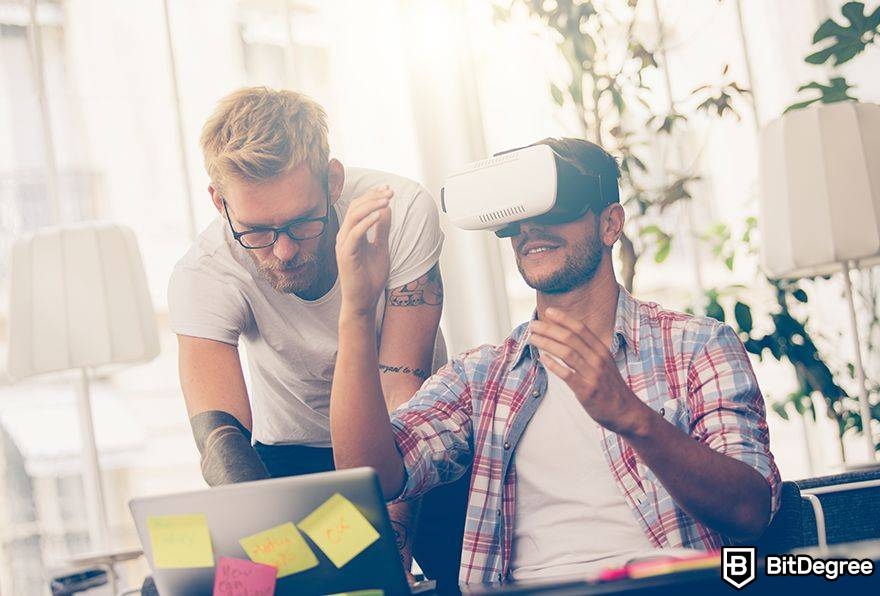
After this typically comes the avatar-creation process. This is different for every metaverse, but in broad strokes, it's the act of designing a character who is representative of you, used to interact with others. It should have some defining traits or features that emulate who you are, although there's no hard or strict rule that it must look like you.
That being said, there is an implicit social convention that you should not create an avatar that is overly deceptive in its design, but this is a sensitive topic. For instance, if the metaverse you are using has skin color choices, it may be seen as socially unacceptable to change your skin color to something that presents a race that is not yours. This is especially problematic if someone does this so that they can enter racially-specific digital locations.
However, this does not mean your avatar must contain all your outward features and aesthetics. For instance, many trans people create avatars that are reminiscent of the body that they are most aligned with, even if their physical body is not constructed in that way. This is not generally seen as controversial, and in fact, it actually acts as a unique metaverse use case, allowing for more self-expression.
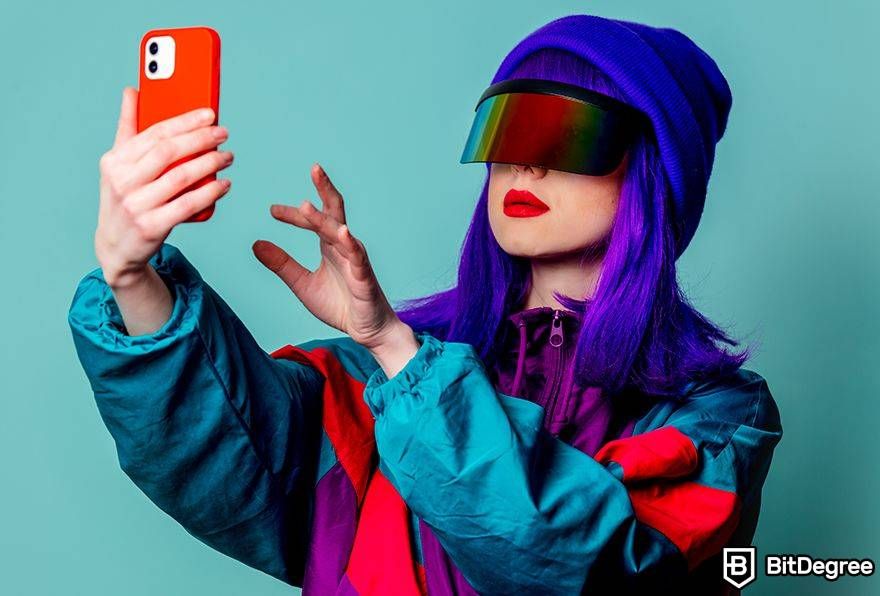
There is a lot that could be said on this topic, and because the metaverse is so new, many social contracts and conventions are still being established. So, to some extent, it may not be worth worrying about this just yet, as no truly hard and defining rules in this sense have been etched out.
Essentially, once you have the technology, a blockchain wallet, and an avatar, you have all the requirements to use the metaverse. All that's left to do then is to explore the environment and get acquainted with it. This is definitely the fun part of the experience– it's something that many people marvel at! A truly well-developed and constructed metaverse is something that should capture your imagination from the get-go!
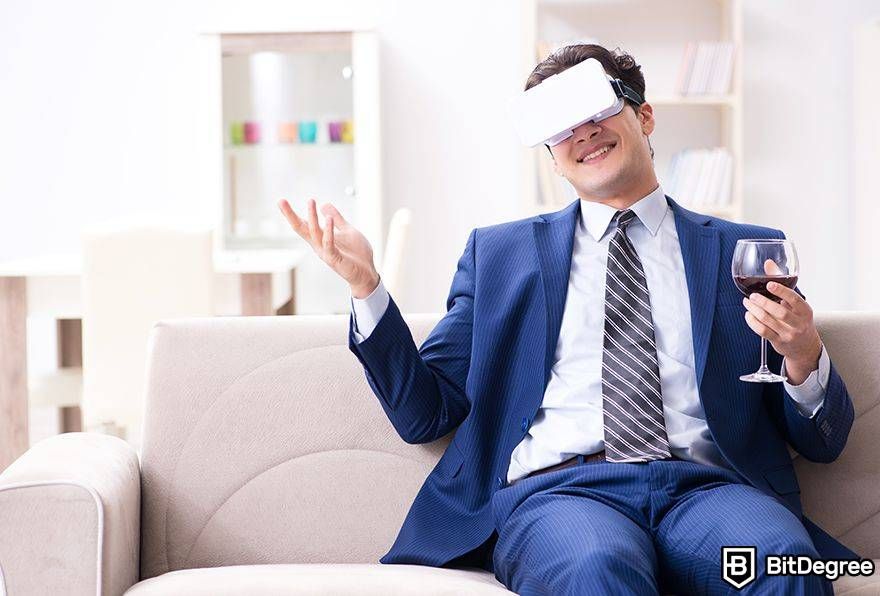
Now that you know how to use metaverse tech, let’s explore some of its best and most fascinating use cases. There are a range of ways that people are using this technology, along with some ideas that have been theorized but are yet to be fully realized. With this in mind, the use cases of metaverse tech are wide-ranging and all-encompassing, which is a good sign as it means that there is a lot of variety and therefore a lot of opportunities for people to get enticed.
Metaverse in Healthcare
One of the most interesting applications of metaverse tech is within the healthcare sector. The medical world has always kept an eye on the tech sphere, constantly looking for new ways to solve old problems. One of the most inventive ways this occurred was when scientists decided to offer VR headsets to burn victims, providing them with a digital environment representing a snowy and cold landscape.
This space was called SnowWorld, and it was found that these types of immersive, cold-presenting environments were able to reduce the pain of burn victims by up to 50%. This happened by reducing pain perception. Technically, SnowWorld was single-player, and so this means it's not a metaverse, but the fact that such technology could bring about this type of relief means that the benefits could easily be transferred over to the metaverse.

Not only this, but if these experiences occurred within a snowy metaverse, then it would mean burn victims could also congregate with others who have suffered similar afflictions and engage in group therapy within a space that has been carefully crafted to help reduce their pain perception. The upshot of this is that it might allow such victims to be more open than they are in traditional, physical, group therapy, as the snowy landscape would be automatically viewed as a safe space.
This leads me to another, tightly connected, use case of metaverse in healthcare – therapy. As mentioned, therapy sessions can be held in the metaverse. This is great for people who are agoraphobic, or who want to seek support from therapists who live in other countries. For those who have niche and specific conditions, there are many circumstances where the best healthcare practitioners are in foreign lands. However, the metaverse allows chasms like this to be easily crossed.
Phone therapy has existed for some time, and this is often used as a workaround, but some people prefer the immersiveness that in-person therapy offers, creating a more intimate experience and helping to build a relationship easier. The metaverse will not fully solve this, but it could help in some way. It would be especially useful for group therapy, as group calls can be tough to organize and orient oneself around.
Continuing with mental health benefits, there is another use case of metaverse tech that has already been mentioned, but let’s unpack it properly here. I stated earlier that some trans people build avatars that are more reminiscent of the bodies that they feel most aligned with. This is an important method of self-actualization that can do wonders for a person’s psychological well-being.

The inability for others to view us in the way that we conceptualize ourselves in our minds is one of the greatest tensions in this world. It is something that has been discussed by many psychologists and psychoanalysts, including the highly revered Jacques Lacan. While it can be tough to overcome this in the physical world, in the metaverse, it's much easier.
The ability to construct ourselves in a way that is more reflective of how we feel is extremely meaningful to our mental health, and is one of the reasons why the fashion industry is so lucrative. We want to give people a very specific impression of who we are, one that typically aligns with our own perceptions of the self. The metaverse is a fantastic place to collapse this problem as it allows for unique and precise avatar creation. Therefore, it is a place that will almost certainly play a large role in identity-shaping and discovery.
Metaverse in Education
I have discussed the metaverse in healthcare, now let's move to the metaverse in education. This is another huge overlap of sectors that has excited people from both groups. Since the pandemic, there has been a heavier emphasis on digital learning, as many students could not enter physical classrooms or lecture halls.

The most straightforward use case for metaverses in education is their functioning as virtual classrooms. This is where students can log into a digital space and join classmates remotely, being taught by a tutor who is also remote. This opens up education in a more worldwide way, as it means that students from across the globe can work together.
It is also great for students who have anxiety, agoraphobia, or who have disabilities that sometimes leave them immobile. It lowers the educational barrier, making knowledge more accessible. While remote, or distance, learning has been around since the birth of the internet, it has often been a very isolating endeavor. It goes without saying that travel in the metaverse is much easier than physically.

In a typical distance-learning environment, students do not have much interaction with their peers, and often are unable to form relationships with them due to not knowing them. However, this metaverse use case breaks that tradition down and offers students more social opportunities. This is a positive that cannot be overlooked. Education and socialization are interconnected concepts, with many believing that socializing helps students perform better. This, alone, is enough reason for people to get excited about the metaverse in education.
Metaverse in Banking
The banking sector has been paying close attention to recent tech developments, and has been learning how to use metaverse technologies for their own gain. In fact, to show their alignment with the industry, JP Morgan opened a metaverse office inside Decentraland, one of the leading blockchain-based metaverse projects. HSBC has also gained metaverse real estate. Of course, blockchain-native companies like KuCoin have done the same.
This may come as a shock to many readers, but it should not be a surprise to see banks taking an active interest in cutting-edge technologies, as they have been trying to keep up with the internet since PayPal took the world by storm. Currently, it is tough to say with confidence what the metaverse in banking offers that traditional banking does not, but the fact that banks are onboarding themselves means they are at least hedging their bets that it will work in their favor.
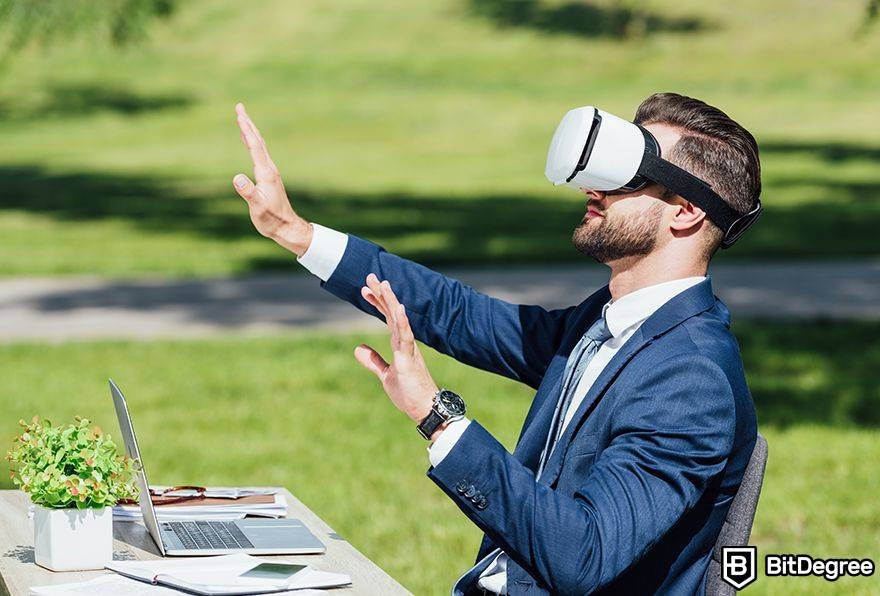
One option they could offer is a type of immersive experience where users can visually see what is in their bank accounts in a more three-dimensional way. For instance, allowing them to see what funds they have in their bank in a more illustrative way than just numbers. When money is only seen as a string of numbers, it can be hard to conceptualize just how much you have possession of.
Banks can also take advantage of metaverses by offering courses to people, experiencing the same benefits listed with regard to the metaverse in education. Banks do this in many physical branches around the world, but with travel in the metaverse being easier, this makes them more accessible.
Another, perhaps smaller, benefit that could exist from the metaverse in banking is that it could help provide younger users with the perception that they are more cutting-edge and forward-thinking. This could have an implicit effect of encouraging more Web3 enthusiasts from opening a traditional account with them.

In this sense, the metaverse in banking could be seen as a method of the fiat world trying to reinvent themselves and stay relevant in an age where cryptocurrency is gaining more traction. It might be a way of showing they are integrating with the decentralized realm of finance, and that they are listening to people’s concerns over traditional money management.
How to Buy Real Estate in the Metaverse?
My discussion on how to use metaverse tech has, so far, evaded the topic of virtual real estate. However, much like the physical world, property and land are important. This is why it was so groundbreaking to hear about banks buying metaverse real estate. But, how is this done?
Each project will have slightly different rules and guidelines for how to buy real estate in the metaverse, however, there are some widespread similarities. For instance, for any blockchain-based metaverse, you will need cryptocurrency to buy real estate. This will need to be in the form of a coin or token that is compatible with the blockchain that the project runs on.
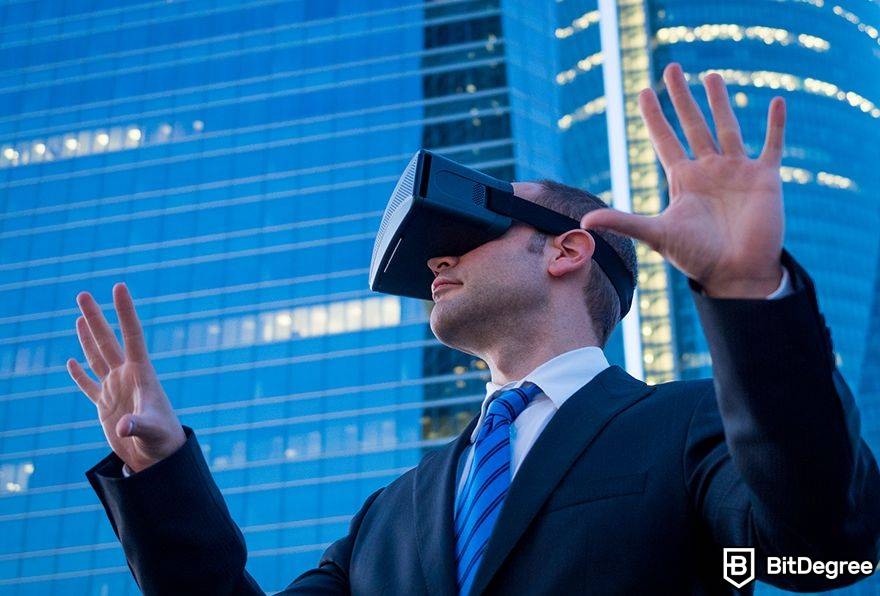
After this, you will need to find a plot of land that is for sale. The newer, and less popular, a metaverse is, the cheaper the land will be (at least, this is usually the case). Oftentimes, as a metaverse project gets more populated, the availability of land diminishes. Land is generally set up as a type of NFT – this way, those who buy it are able to have complete ownership over it. In this sense, the fact that it is an NFT works a little like receiving a deed to a plot of land in the physical world.
It also means that those who buy land can sell it on secondary markets, such as OpenSea. However, the reselling of digital real estate can lead to higher prices for second-hand buyers. Plus, for highly popular metaverse projects, a lot of prime land has already been bought once, making them more expensive when it comes to reselling.
Depending on the project, having land may not be extremely important to learning how to use metaverse tech, although it is often a big part of “living” in such digital spaces. Each project will be different, and handle land in nuanced ways, although the cookie-cutter method is to present all land as available for purchase and resale.
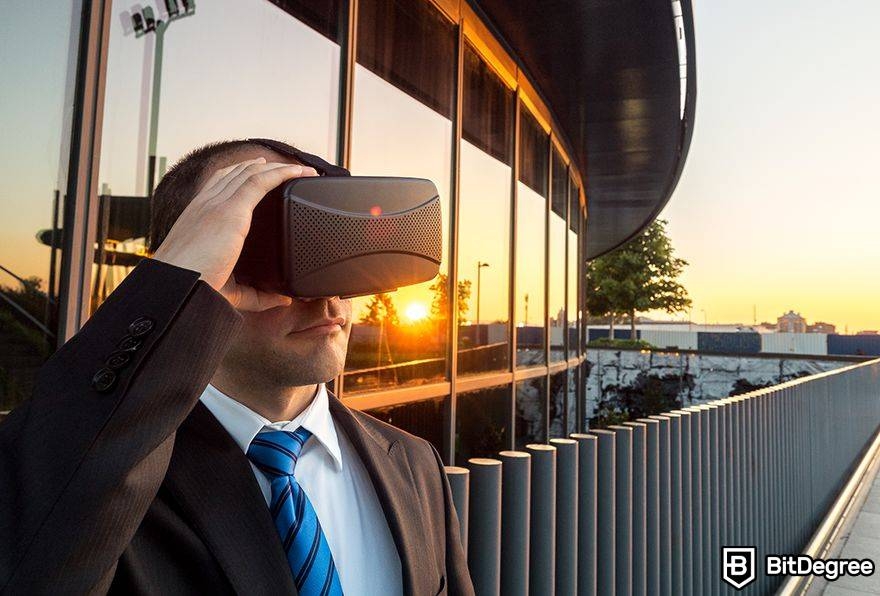
That does not mean that how to buy real estate in the metaverse will never change. Land and ownership is a sensitive topic, especially for the blockchain space, which has a large faction of cypherpunk members, who often cross over into anarchistic sub-groups. Without unpacking this in full, it is fair to say that there are many crypto and blockchain users who are open to alternative methods of land and real estate ownership.
Perhaps a different concept around real estate will emerge, such as creating spaces that are owned by all stakeholders, but which do not have divisible locations that can be owned by individuals. If this became the norm, then it would certainly change the way that people learn how to use metaverse tech, as it would incur a new set of social rules and conventions with regards to how people spend time in virtual buildings.
Conclusions
How to use metaverse tech is a hot topic for anybody who has been paying attention to the developments in the blockchain and VR sectors. It is a subject that arises many times in the news, without many explorations into how people can engage in it, and what they can expect from it in terms of use cases. Topics like metaverse in healthcare, metaverse in banking, and education are important to emphasize as these are some of the major frontiers that developers are focusing on.
These are just a fraction of the areas that people can explore when they learn how to use metaverse tech, but for many, they make the pursuit of onboarding very much worthwhile. In truth, we do not know every use case of the metaverse yet, as developers are still playing with them and uncovering new ideas and protocols. The average user is also still in their exploratory phase, too, learning about its limitations and its strong points.
This is the nature of technological discovery. Humans have a long history of creating things that we are unsure what to do with initially, or things that begin to get used in a different way over many years. When new tools emerge, there is a period of orientation and learning involved, which is where the heart of experimentation resides. It is exciting to see this happen in real time, and thrilling to know that people can engage in this themselves and join in with the discovery phase on a personal level.
With this in mind, the question of how to use metaverse tech can only be half-answered. For the time being, as there are many years of exploration that will likely occur, where people find the boundaries of the metaverse and learn how to make these spaces their own. Of course, this is not only necessary, but it is eye-opening to see how people begin to integrate the metaverse into their lives, and make it a location they can confidently call home. The same is true with top crypto companies like Unstoppable Domains, who are also exploring these tools in tandem with the rest of us!
The content published on this website is not aimed to give any kind of financial, investment, trading, or any other form of advice. BitDegree.org does not endorse or suggest you to buy, sell or hold any kind of cryptocurrency. Before making financial investment decisions, do consult your financial advisor.





